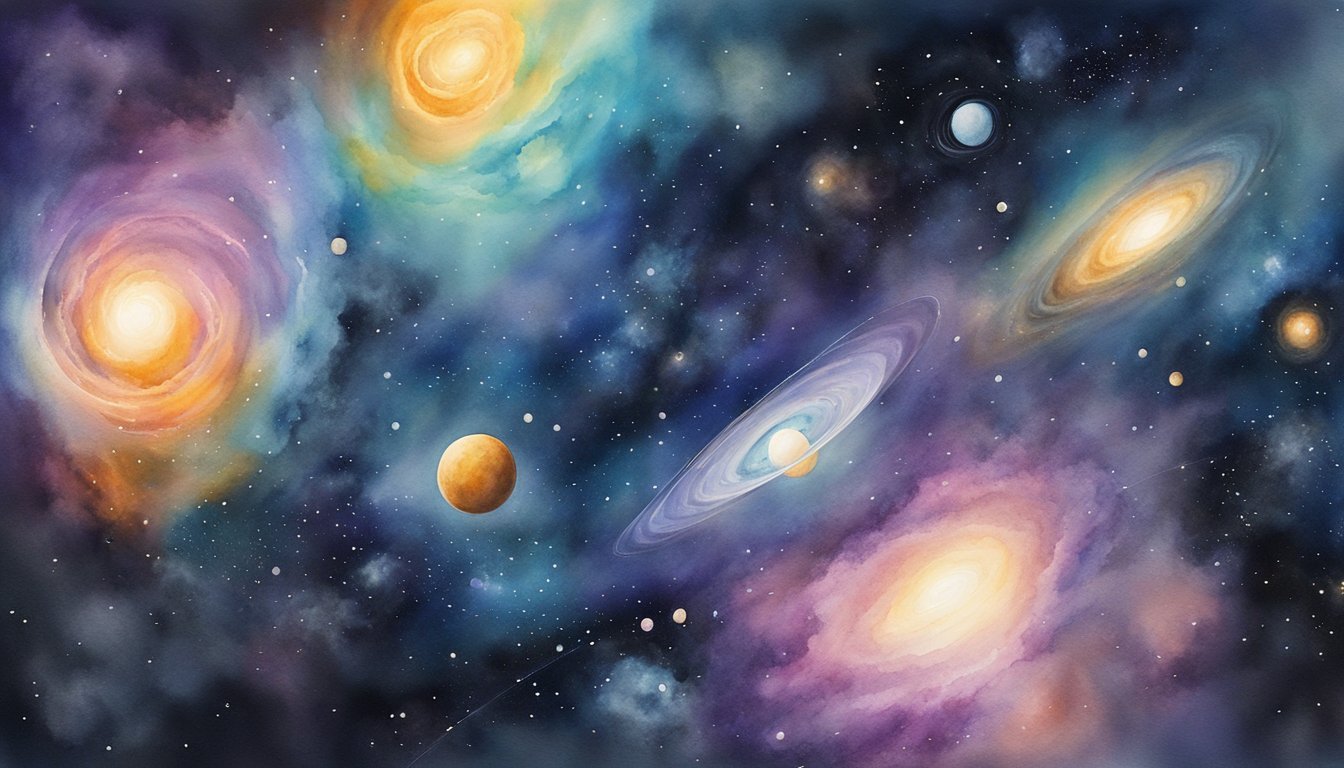Understanding Galaxies
Galaxies are vast collections of stars, gas, dust, and dark matter, varying widely in size and structure. They range from dwarf galaxies with just a few billion stars to giants with trillions of stars, all gravitationally bound together.
Types and Classification
Galaxies are primarily classified into three broad categories: spiral galaxies, elliptical galaxies, and irregular galaxies. Spiral galaxies, like the Milky Way, have distinctive spiral arms that wind outwards from the center and are rich in dust and young stars. Elliptical galaxies range significantly in size and lack the structure of spirals; they tend to have older star populations and less interstellar matter. The irregular galaxies don’t fall into a clear shape, being neither spiral nor elliptical, and often result from collisions or close encounters with other galaxies. Subtypes exist within these categories, further categorizing galaxies by the specifics of their appearance and structure.
Components and Structure
The structure of a galaxy is defined by several components. At the core, many galaxies harbor a supermassive black hole which influences the motion of stars and gas in its vicinity. Surrounding the core, spiral galaxies feature a bulge, and trailing arms, where active star formation occurs. In contrast, elliptical galaxies consist mostly of a smooth, featureless body of stars with little gas or dust. Irregular galaxies lack a definitive shape and can contain varying mixtures of stars, gas, and dust. Galaxies are also enveloped in a halo of dark matter, although this is not directly observable; its presence is inferred from its gravitational effects on the visible matter in the galaxy.
For further detailed explanations on galaxy types and their characteristics, you can read about Galaxy Facts and the classification system on NASA’s overview of galaxies.
Galactic Phenomena and Discovery

Exploring the universe has led to remarkable discoveries about galactic phenomena. From massive superclusters to the intricate workings of black holes, the constant advancements in astronomy reveal the vastness and complexity of galaxies.
Important Discoveries and Theories
Theories about the cosmos have evolved since Immanuel Kant conceptualized island universes in the 18th century. It was Edwin Hubble who, in the 20th century, confirmed that these “island universes” were indeed galaxies outside our Milky Way. Discoveries of dark matter, which explains the gravity holding galaxies together despite their rapid rotation rates, and dark energy, propelling the expansion of the universe, have reshaped our understanding of the universe’s structure and dynamics.
Astronomical instruments like the Hubble Space Telescope and the more recently launched James Webb Space Telescope have enabled astronomers to see galaxies in their infancy, mere hundreds of millions of years after the Big Bang. These observations include not only galaxies consisting of stars, dust and gas but also the supermassive black holes that lurk in galactic centers, bursting with luminosity as quasars or blazars.
Noteworthy Galactic Objects
Galaxies are as diverse as they are numerous. The Sombrero Galaxy, known for its bright nucleus and prominent dust lane, showcases a spiral structure, while the vast Virgo Supercluster represents a collection of galaxy clusters, including the Local Group that houses our Milky Way. The descendent of a galactic collision, the Antennae Galaxies, highlight the spectacular phenomenon of blending galaxies, fueling new star production at a remarkable rate. The Laniakea Supercluster, home to our galaxy and around 100,000 others, emphasizes the massive gravitationally bound groups that dominate the universe’s structure.
Galaxies can also be grouped by shape, with spiral, elliptical, and irregular being the main categories. The elegantly patterned spiral nebulae are characterized by pinwheel arms rotating around a central nucleus, with our Milky Way being a classic example. Lenticular galaxies, such as the spindle-shaped Sombrero, provide a middle ground between spiral and elliptical forms.
Astronomers continue to investigate the nature of galactic phenomena, with recent discoveries of objects like neutron stars and brown dwarfs adding to the complexity of what defines a galaxy. Each discovery, from star systems to galactic clusters, contributes to our growing understanding of the universe and highlights the importance of collections of stars, gas, and dust in shaping our cosmic environment.

